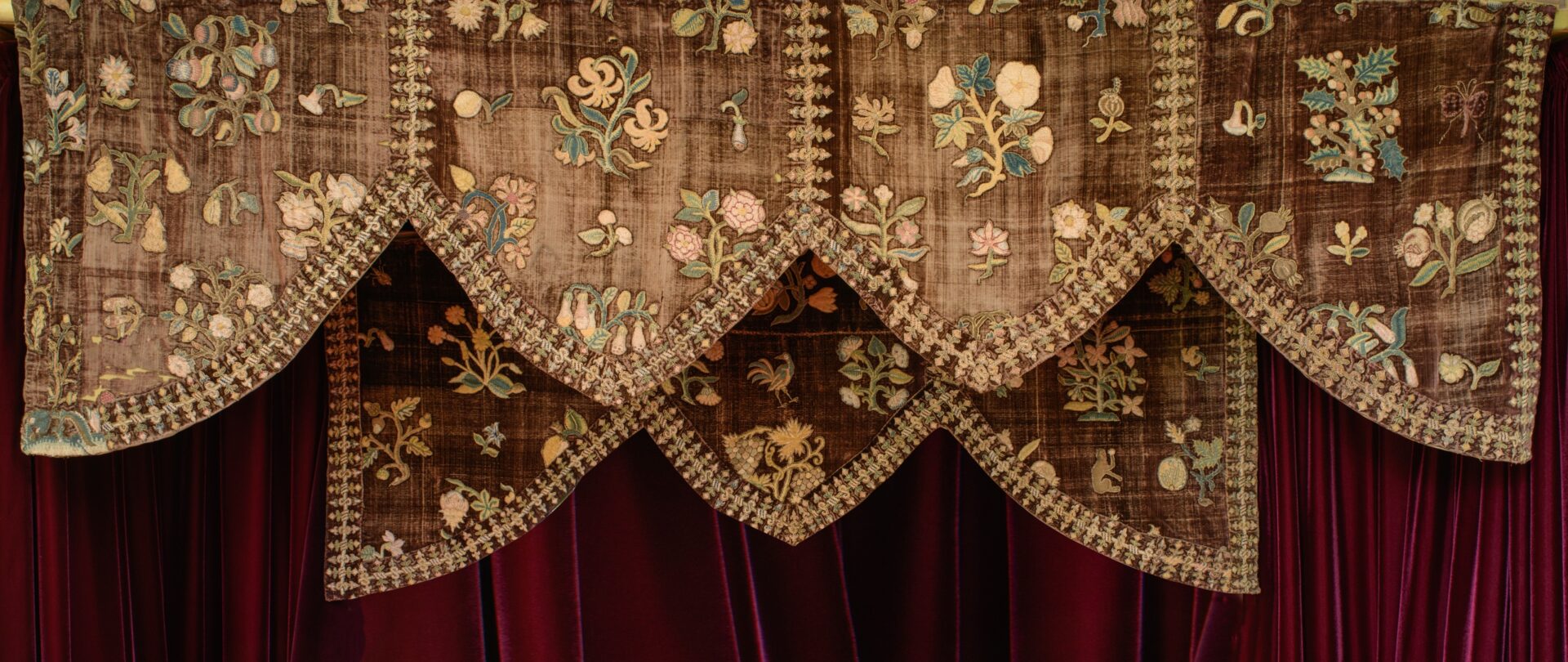This, the last room on your visit, is named after the Duke of Lennox, who was a great friend of James VI, and so a frequent visitor to the house in the days of the 1st Viscount Stormont. This room brings together and celebrates the many royal associations Scone has had in its long history.
The Jacobean gateleg oak table is reputed to have belonged to James VI and given to David Murray, 1st Viscount Stormont, as a gift. The table is remarkable in that it is unusual for furniture of this date to be so large and to have such intricate turning on the legs.
Against the wall of the room is an imposing Louis XIII Ebony Cabinet. It is carved with images of cupids, mermen, mermaids, merbabies, frolicking boys, angels and martial figures. The two panelled and fielded doors are carved with classical figures and surrounded by 14 drawers, with ripple mouldings, and enclose an elaborate interior of plain and green-stained ivory embellishments. This type of cabinet was often found in stately homes where the owners were allowed to practise in private their Catholic religion after the Reformation, so long as they paid their taxes!
Around the room is a collection of wall hangings. The largest one in the room is a highly important French 16th century work. It depicts two female figures representing ‘Justice and Mercy’ embracing. They are attended by Putti (childlike angelic spirits) in a landscape with Moses holding the Tablets of the Law (The Ten Commandments) and the Crucifixion. With its richly ornamented and highly symbolic border, this early and wonderfully preserved panel is a work of extraordinary credit to the needlewoman.
Further around the room is a set of needlework hangings which were worked on by Mary Queen of Scots and her ladies-in-waiting during her imprisonment at Loch Leven Castle between 1567 and 1568. The hangings have been stitched using the petit-point method of embroidery. The needlework, which has been stitched onto a brown velvet background, illustrates stylised flowers, birds, animals, bugs, fruit and foliage. If you look closely at the borders of the panels, you will see the initials MS stitched into the work; these are the initials of Mary Stuart.
Underneath the hangings are a set of George I Walnut Armchairs. The padded, arched, waisted backs and rounded seats are covered in a contemporary petite-point needlework, depicting figures in landscapes within floral borders. Each seat has cabriole legs and pad feet.
But perhaps the most familiar chair in the room is a copy of the Coronation Chair. The original chair, which is still housed in Westminster Abbey, was commissioned by King Edward I in 1296 to contain the coronation stone of Scotland, which he had captured from the Scots. Up until that point, the coronation stone - or Stone of Destiny - had been kept here at Scone.
In the display cabinet are replicas of the Honours of Scotland, otherwise known as the Scottish Crown Jewels. Dating from the 15th and 16th centuries, they are the oldest surviving set of crown jewels in the British Isles. The regalia were first used together for the coronation of Mary Queen of Scots in 1543, when she was just nine months old. They were last used for the coronation of Charles II in 1651. The crown was remodelled by James V in 1540 with a purple and ermine bonnet. But later, James VII had the bonnet changed to red. The Honours are on display in the Crown Room at Edinburgh Castle.
Please now make your way into our Gift Shop where we hope you will find a memento of your visit to Scone Palace.
